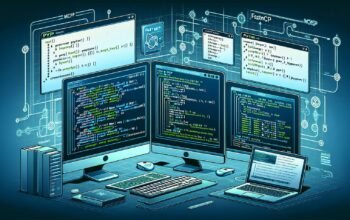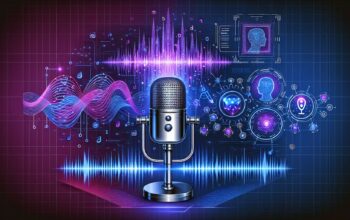Building practical AI projects not only deepens your technical knowledge but also showcases your expertise to recruiters and clients. Below, we dive deeper into six categories of AI applications, with guidance on frameworks, datasets, and implementation tips.
1. Chatbots and Virtual Assistants
Core concepts:
- Natural Language Understanding (NLU): Intent classification and entity extraction
- Dialog Management: State tracking and response selection
- Channel Integration: Web, Slack, Microsoft Teams, voice assistants
Getting started:
- Choose a framework: Rasa (Python), Microsoft Bot Framework (C#/.NET), or Dialogflow (cloud).
- Collect or simulate conversation data (CSV or JSON). Use spaCy or Hugging Face for intent/entity models.
- Define domain-specific intents (e.g.,
book_flight,get_weather) and annotate entities. - Implement a simple action server to fulfill requests (e.g., call an API to fetch weather data).
# Example: Rasa domain.yml snippet
intents:
- greet
- ask_weather
entities:
- location
responses:
utter_greet:
- text: "Hello! How can I help you today?"
utter_weather:
- text: "The weather in {location} is sunny."
Next steps:
- Add contextual understanding with memory and slots.
- Integrate with external APIs, databases, or CRM tools.
- Deploy to Azure Bot Service or AWS Lex for scalability.
2. Recommendation Systems
Key approaches:
- Collaborative Filtering: User–item matrix factorization (e.g., SVD).
- Content-Based: TF-IDF or embeddings on item metadata.
- Hybrid: Combine both to improve cold-start performance.
Implementation tips:
- Use the Surprise library or implicit for matrix factorization in Python.
- Gather data from public datasets like MovieLens, Amazon Reviews, or your own logs.
- Evaluate with metrics such as RMSE, Precision@K, and Recall@K.
from surprise import Dataset, SVD, evaluate
data = Dataset.load_builtin('ml-100k')
algo = SVD()
evaluate(algo, data, measures=['RMSE', 'MAE'])
3. Image Classification & Object Detection
Workflow:
- Data collection and labeling: Use tools like LabelImg or CVAT.
- Model selection: Transfer learning with MobileNet, ResNet, or YOLOv5.
- Training: Leverage TensorFlow Keras or PyTorch Lightning.
- Deployment: Export to ONNX or TensorFlow Lite for edge devices.
# PyTorch transfer learning example
def train(model, dataloader):
model.train()
for images, labels in dataloader:
outputs = model(images)
loss = criterion(outputs, labels)
loss.backward()
optimizer.step()
4. Sentiment Analysis & Text Summarization
Advanced NLP:
- Pre-trained transformers: BERT, RoBERTa for sentiment classification.
- Summarization: Use T5 or BART for abstractive summaries.
- Fine-tuning: Hugging Face Transformers simplifies task-specific training.
from transformers import pipeline
sentiment = pipeline('sentiment-analysis')
print(sentiment("AI projects help you learn by doing."))
summarizer = pipeline('summarization')
summarizer(long_text, max_length=50)
5. Predictive Analytics
Steps:
- Data preprocessing: Handle missing values, scaling, and feature engineering.
- Model choice: Linear regression, Random Forest, XGBoost for tabular data.
- Validation: Cross-validation and hyperparameter tuning with scikit-learn or Optuna.
from sklearn.ensemble import RandomForestRegressor
model = RandomForestRegressor(n_estimators=100)
model.fit(X_train, y_train)
print(model.score(X_test, y_test))
6. Autonomous Systems & Robotics
Core areas:
- Simulation: Use Gazebo or Webots with ROS to prototype behaviors.
- Computer Vision: Integrate OpenCV or depth sensors for environment perception.
- Control Algorithms: PID, SLAM (e.g., RTAB-Map) for navigation.
- Reinforcement Learning: Train agents in OpenAI Gym or Unity ML-Agents.
By completing these projects, you’ll gain hands-on experience with industry-standard tools and techniques. Showcase your code on GitHub, write detailed READMEs, and publish your results on a personal blog. This portfolio not only validates your skills but also attracts opportunities for collaboration, freelancing, and full-time roles.







